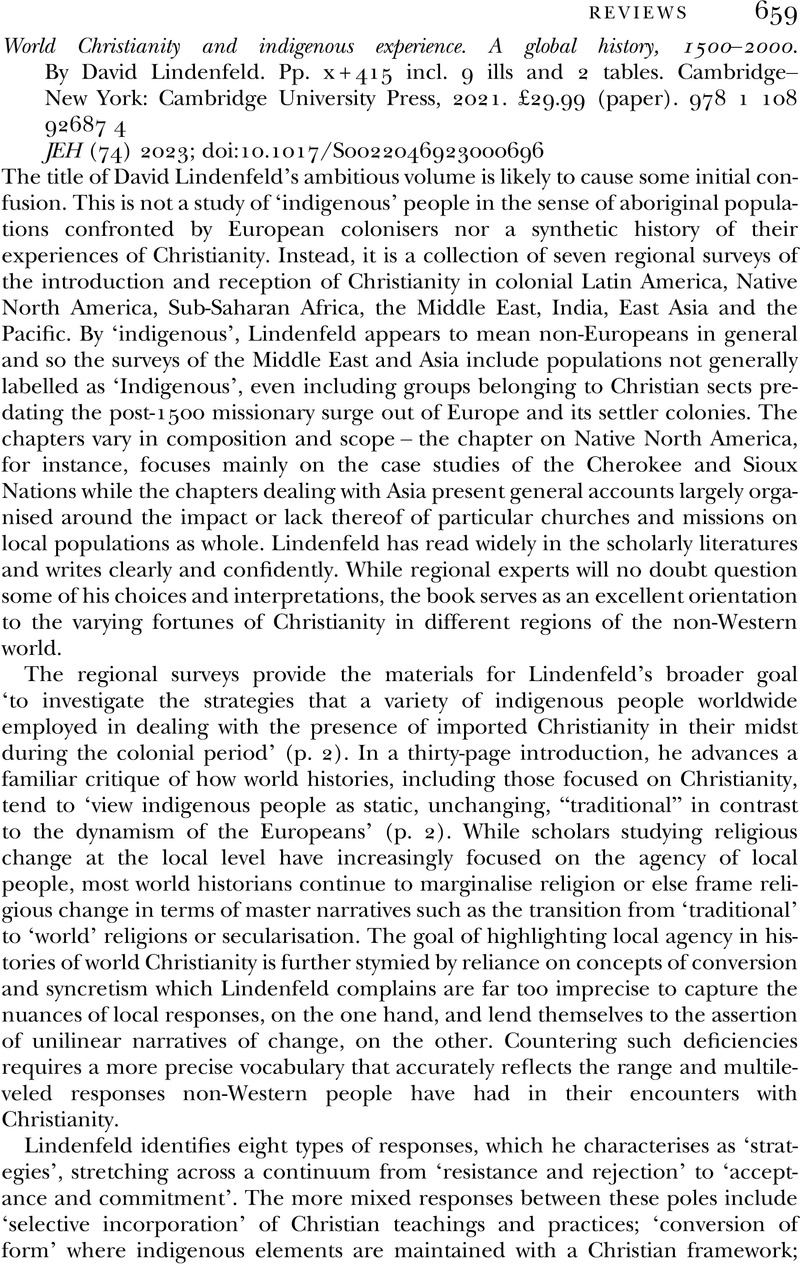No CrossRef data available.
Article contents
World Christianity and indigenous experience. A global history, 1500–2000. By David Lindenfeld. Pp. x + 415 incl. 9 ills and 2 tables. Cambridge–New York: Cambridge University Press, 2021. £29.99 (paper). 978 1 108 92687 4
Review products
World Christianity and indigenous experience. A global history, 1500–2000. By David Lindenfeld. Pp. x + 415 incl. 9 ills and 2 tables. Cambridge–New York: Cambridge University Press, 2021. £29.99 (paper). 978 1 108 92687 4
Published online by Cambridge University Press: 05 July 2023
Abstract
An abstract is not available for this content so a preview has been provided. Please use the Get access link above for information on how to access this content.

- Type
- Reviews
- Information
- Copyright
- Copyright © Cambridge University Press 2023



